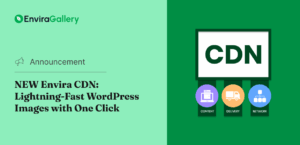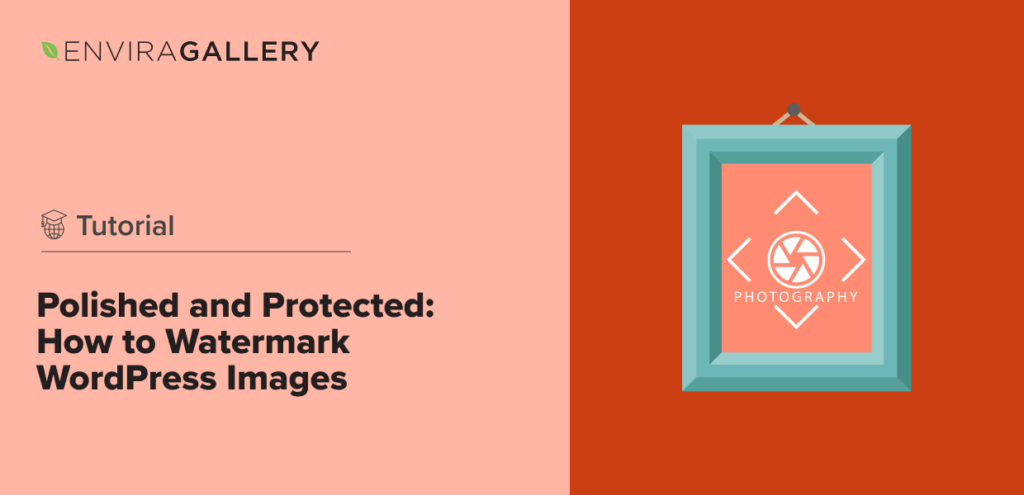Stock photography is a great way to make money with your photography skills and monetize your existing portfolio. And, it’s now even easier than ever to get started shooting stock photography! However, knowing which stock photo sites will earn you the most money is key to your success. Want to know the best stock photo sites?
We’ve got the inside scoop on the best stock photo sites available to photographers today! This article will break down:
- What is stock photography
- The pros and cons of shooting stock photos
- The differences between public domain, royalty-free and rights-managed images
- The best stock photography sites
What Is Stock Photography?

If you see an image in an advertisement on a website or on a product label, there’s a good chance it’s stock imagery. Stock images are photos collected by stock agencies and sold to clients for use in their products and ads. These agencies typically operate as stock photography websites, which makes it easier for photographers to contribute their photos and for clients to search for shots they want to buy.
When a commercial buyer finds a shot they’re interested in, they purchase a license to use it. While different sites have different policies regarding these licenses, often times your photo can sell to more than one buyer. This means your most successful shots can keep selling, earning you more money each time.
For more on licenses, check out the breakdown of differences between public domain, royalty-free and rights-managed licenses later in this guide.
Stock photography sites consider photographers whose images they sell “contributors” to the site. This means the shots you upload, if they sell, will contribute to your earnings. Of course, the agency keeps a cut of the sale to help them pay their business expenses, which includes marketing your images.
Fortunately, stock photography has a very low barrier to entry. Anyone with a camera can shoot and submit to stock photography websites. While different websites have different requirements for their images, there’s a stock photography website fit for each photographer!
If you want to get started instead with selling on your own website, check out our guide on how to sell stock photos from Wordpress.
Stock Photography Business Model

Stock photography has evolved over the last couple years. If you heard the term “stock photography” a decade ago, you might have thought of cheesy, posed shots featuring only a couple models and a few basic props on a plain white background. These days, agencies and clients are looking instead for real-world shots of people and places that look authentic.
New trends in stock photography emphasize a genuine and natural style. While they still want high-quality photos, images you’ve already shot could sell on these sites. This makes it even easier to get started, as you don’t need dedicated studio space or props. All you need is the ability to shoot high-resolution photos.
Image Quality
One important role of a stock photography agency is to provide a curated choice of imagery for its commercial clients. This means the agency will only promote the highest quality photos. Clients don’t want to sift through dozens of out of focus or overexposed shots just to find the usable ones.
So, you can save yourself time and energy by submitting only your best work. Other, less than perfect work will likely be rejected.
Image Tags
Just about any type of stock image can sell online. Whether it’s a portrait, landscape or product photo, there’s someone out there who needs it! Commercial buyers find the images they’re interested in by searching the tags. When you attach these little digital labels to your image, when you upload it, you make it easier for customers to find your work.
The easiest way to utilize tags in your stock imagery is to identify what’s in the photo. For example, you might mark your beach photo with the tags, “beach,” “sunny” and “summer,” so that clients looking for a sunny beach photo will find your image.
Niche Types of Stock Agencies
Of course, not every image will be used in a major marketing campaign. Microstock agencies are one of the fastest growing stock businesses, and they target a new type of buyer. Images on these sites sell for less money and are used most frequently for social media posts or online publication. Thus, these microstock photography websites serve a less expensive market.
Typically, the requirements and licenses for microstock shots are less strict, which makes it an easy place for beginners to get started.
The Pros and Cons of Shooting Stock Photos

The stock photography business model works great for photographers at every level. Whether you’re a hobbyist who wants to make a few extra dollars selling photos you already have, or you’re a dedicated shooter who creates images specifically for stock, you can make money almost immediately on stock photo sites.
Price Variability
A stock image sale can earn you anywhere from a few cents to a few hundred dollars. This variability in sale prices is one of the best parts of shooting stock, but also one of the most challenging. Since stock photography websites are responsible for setting their own prices, you may not always earn as much as you would like on a single sale.
Because each stock photo agency sets its own prices, different websites will charge different rates. Some even base their rates on the client. For example, big buyers may have previously negotiated a discounted rate for an image pack. That means you won’t know exactly how much you’ll end up making on each image.
Shooting large numbers of images across different subjects and using different stock agencies can help improve your income from stock sales. Following these guidelines will also make stock photo sales a more sustainable source of income for you in the long run.
And even if you can generate some sales quickly, you likely won’t get your cash right away. Often, to reduce transaction costs, photography websites will set a minimum payout. This means you have to earn a certain dollar amount before they’ll cut you a check. While this can be a bit disappointing, it’s a requirement of the business. Consider it a great motivator to hit that first payout marker!
Different Uploading Processes
You have to work to make money, and stock imagery is no exception. While microstock agencies have tried to make the uploading process as easy as possible, it can still be an effort to list your photos on any stock photo website. Listing your images involves uploading them to the site, tagging them with keywords and categorizing hundreds of images.
Fortunately, once you list your images, they’re on the site for good. That means you only have to complete the tedious process of uploading, tagging and categorizing one time.
Keep in mind that stock photography is a marathon, not a sprint. Uploading your existing images can be a great way to get started, but don’t try to post them all on one day. Instead, upload some of your best and strongest images. That way, you’ll generate a few quick sales, which will boost your confidence and motivate you to keep at it.
Still, remember that buyers are always looking for fresh images. Having a stagnant portfolio on a stock photo site can mean lower sales.
And, since trends are always changing, you’ll want to keep your images current. Images for social media and startup stock photos change particularly quickly, so pay attention to major trend shifts, then ride the wave! Locating underserved, niche trends can really help you rake in the sales.
Image Quality Requirements
Since clients use stock photos for all sorts of projects, they expect stock imagery to be of a higher resolution that works at a variety of sizes and in a variety of mediums. In order to sell photos, stock image sites place resolution and technical quality restrictions on images they accept. Imperfections like overexposure, missed focus and noisy images won’t sell on stock sites, and they might not even be accepted into the catalog.
If your photo is rejected, turn your disappointment into a learning opportunity to help improve your fundamental technical skills. Consider the stock photo site’s rejection as feedback that can help you grow with the help of outside resources. For example, if your landscape shot is denied from your favorite stock site, check out a guide on landscape photography to help you improve in the future.
Need for Unique Content
The scope of microstock websites can be both a benefit and a challenge. Big microstock sites offer millions of images, covering just about every concept imaginable. This large catalog draws a lot of buyers, but it can be a challenge to make your photos stand out in the crowd. As a result, your initial sales can be slow.
Coming up with original shots can be tricky. Just keep in mind that buyers are always looking for something new, so try to be original! Standing out on stock image websites is another great way to challenge your artist’s eye and technical skills.
Earning Trends
Given the recent downward trend in earnings on stock photo websites, you might feel like selling your photos isn’t worth the work. As more people upload stock photos, the supply increases, which pushes prices down. In fact, some stock sales generates only a few cents per download.
And, a number of stock photo sites offer their images for free, so photographers gain recognition and credit rather than compensation.
Fortunately, big commercial clients and professional businesses are happy to spend a few dollars to ensure they don’t experience image rights issues by purchasing the licenses to their stock photos. So, you shouldn’t avoid selling stock photos, but instead should focus on selling via websites with a proven track record of helping both their clients and photographers.
Differences between Public Domain, Royalty-Free and Rights-Managed Stock Photos

Speaking of licenses, stock and micro-stock agencies sell photos with different licenses, often for different prices. Put simply, these licenses stipulate a set of rules about how the photos can be used. In fact, licenses dictate many important parts of stock photo sites’ business models.
Licenses are important, because they affect everything from the average selling price, to the typical buyer, to whether you can sell the same image across multiple websites.
Royalty Free
Royalty free licenses power the major players in the microstock industry, and probably represent the bulk of sales you’d typically make. Since these licenses are non-exclusive, you can sell the image more than once, and even from more than one agency. It allows the client to use the image more than once as well, which improves the value for them and simplifies the sales process.
The major downside to royalty free is that, while you have more opportunities to earn money from these images, each sale typically returns little money. Of course, because you can sell royalty free images more than once and in more than one place, your $2 royalty free image may end up earning you $10 across 5 different sales.
Ultimately, it’s better to have a royalty free image earn you less and sell more, than it is for that image to sit in a rights managed catalog and never sell.
Rights Managed
Rights managed licenses are much stricter. The buyer and the agency negotiate these licenses and come to an agreement about how the buyer can use the image and for how long.
For instance, imagine you’re a buyer who wants an image for a calendar. Rights managed lets you negotiate a rate for exclusive use of an image in America, for 2021, for printed products. While you might pay a bit more, you’d know that you’ll be the only calendar to feature this image in America in the year 2021.
This more complicated license can actually be a better value for the buyer, and it can command a higher average selling price per image. As a photographer, this means higher earnings for each image, but it comes at the cost of only being able to offer that image through one agency.
With a rights managed license site, you’ll have a more limited opportunity to generate repeat sales for your images.
Royalty free and rights managed licenses typically power very different business models. So, understanding which you want to pursue is key to getting a good start in stock imagery. Fortunately, they aren’t mutually exclusive.
While you can’t sell the same image on a royalty free site and rights managed site, you can sell some of your total body of work under each model.
For example, your absolute best shots may be better suited for a rights managed sale, while your “B+” shots can still be very profitable under a royalty free license. Some stock websites even give you the option of choosing which license to sell each image under, making the choice even simpler.
Public Domain and Creative Commons
Public domain licenses are actually a subset of a group of licenses known as Creative Commons. Creative Commons licenses were initially launched by a non-profit and are intended to authorize free distribution of a copyrighted work.
Put simply, Creative Commons licenses don’t correlate to business models for stock agencies. Instead, they denote a lack of business model. If you use a stock photography website and offer your photos with a Creative Commons license, you’re requesting only credit and attribution from anyone who wants to use the photo.
While there are many different types of CC licenses, the big terms to understand are attribution, share-alike, non-commercial, and no derivatives. A final license, public domain, carries no restrictions and allows any user to appropriate the photo for any purpose.
Fortunately, each of these terms is pretty simple to understand:
- Attribution – People who use that stock photo must give the photographer credit, typically via a byline.
- Share alike – Requires users to release their work, created using a stock image, under a “not more restrictive” license. This prevents the derivative work from being sublicensed with a more restrictive clause. That way, derivative work can’t turn a profit from free images.
- Non commercial – Stipulates that the image may only be used in non-commercial works. No derivative works licenses prevent users from altering the stock photography. Instead, they must display the photo in its entirety.
Stock image sites that use these types of licenses are among the fastest growing. These sites, like Unsplash and Pexels, can provide a ton of exposure for photographers, since they require users attribute the work to the owners. But, these sites won’t earn you any money.
If you’re just looking to share your photography and would get a kick out of stumbling across your photo in the wild, consider one of these sites. Just remember, these free licenses also mean that your photos, once downloaded, are out of your hands.
You might not always agree with how clients use your photos, but there isn’t much you can do about it if it has a Creative Commons license.
The Best Stock Photography Websites
Now that you know a bit about how stock image websites work and what to look for, let’s talk about the best stock photography websites:
1. Getty

Getty Images represents one of the largest companies in the stock photography industry. With over 200 million digital assets, many buyers choose Getty as their first stop when shopping for stock imagery.
They target larger, high-end buyers, and list images for an average of $500 a piece. Given that they offer such high selling prices, Getty holds photo submissions to very high standards. This makes them among the premiere stock agencies.
Getting your work accepted into the Getty Images catalog can be a point of personal pride as well as a great earning opportunity.
And, with Getty, you’re certain to retain some control over your photography and earning potential. Getty offers both rights managed and royalty free image licenses to their buyers.
2. iStock
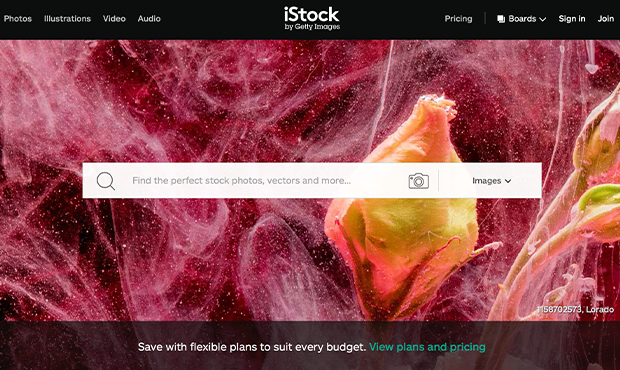
A microstock agency that offers millions of photos, iStock represents another major presence in the stock photography industry. It targets a lower price point than Getty or other rights managed catalogs; images on iStock can sell for anywhere from $10 to 22 cents. As a contributing photographer, you receive between 15 to 40% of the iStock sale’s revenue.
iStock is one of the best places to begin selling stock images. Because its image requirements are lower, you can start selling more easily, likely with images you’ve already shot. Additionally, their royalty free model allows you to continue to sell your images in other places, leaving you free to explore additional website options.
3. Adobe Stock
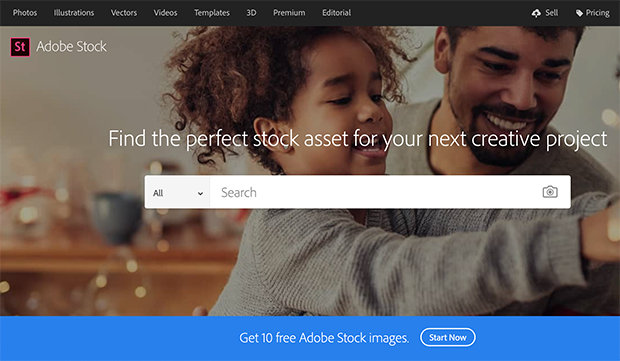
Adobe Stock is a stock photography website run by one of the biggest names in photography software. They offer royalties up to 35% with non-exclusive licenses. Because Adobe offers their buyers a number of different subscription packages, payouts on your images may range from around 35 cents to $3.30 per image. Extended license images will earn you even more — up to $26.40.
Adobe’s stock website offers a number of unique features that can make it beginner-friendly. One of my favorites is the automatic tagging option. Adobe uses an image recognition AI to categorize, tag and even title your photo. This makes uploading your photos much easier and faster, so that you can create a large portfolio with less effort.
Additionally, Adobe offers integration with the Adobe Creative Suite. If you’re already using Adobe Lightroom, you can easily upload your images directly to the stock service.
4. Crestock
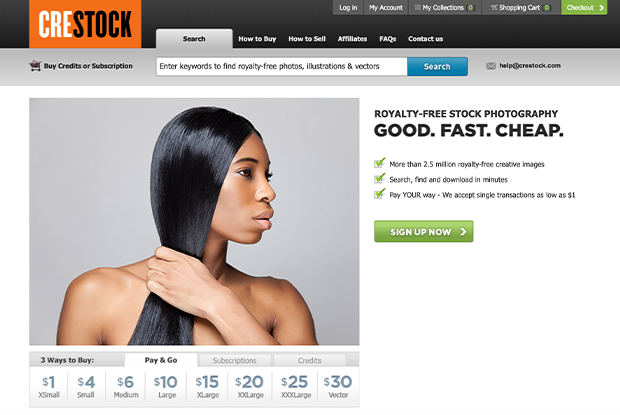
Crestock offers royalty free licenses with a unique focus on buyer information. Their three purchase models include direct purchases, credits, and subscriptions. Like other stock websites that use a variety of purchase models, this can make it difficult to calculate how much you can earn. But, with Crestock, you should expect similar earnings to other microstock websites like Adobe Stock and iStock.
Buyers on Crestock find images primarily by tag searching, so make sure to accurately tag your images and use a variety of keywords. With 2.5 million images in their catalog, Crestock has fewer images than some competing stock photography sites. That will make it easier for you to stand out as a great stock image photographer.
Crestock’s selection of educational material for both buyers and sellers makes it a great resource for beginners in the stock photography field. If you want to continue to build your understanding of how the stock image business operates, selling via Crestock can be a great learning opportunity.
As a beginner on Crestock, you’ll have easy access to information regarding royalties, uploading, technical requirements and other rules, which can be a big help.
In general, violating the rules of a stock photography site can have negative consequences for your account, including limited submission abilities or account termination. Make sure to research each website’s particular submission rules before getting started.
5. Shutterstock
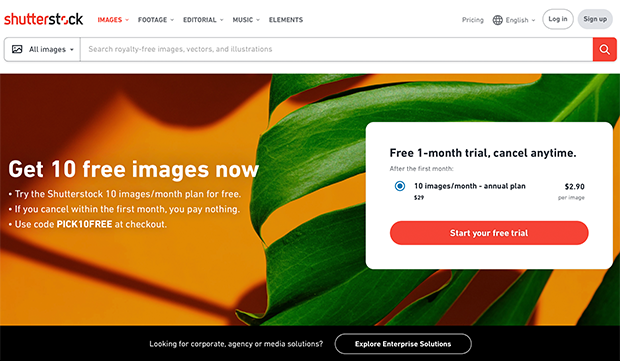
Shutterstock represents another massive presence in the stock industry. They’ve paid out more than $1 billion in royalties to their contributors over the years by offering royalty free, non-exclusive licenses. At Shutterstock, you can earn between 25 cents and up to $80 for a custom or enhanced license image.
Shutterstock makes it easy to receive your payout by integrating with platforms like Paypal. And, Shutterstock’s minimum payout amount is lower than some competing microstock websites. So, with Shutterstock, you won’t have to wait as long to see your money.
As a Shutterstock user, you can make even more money through additional revenue streams other than your photography. For example, their referral program earns you money when you refer a buyer or another photographer to the service. For a period, you’ll earn a commission on each of their sales or purchases. What a great added bonus!
6. Unsplash
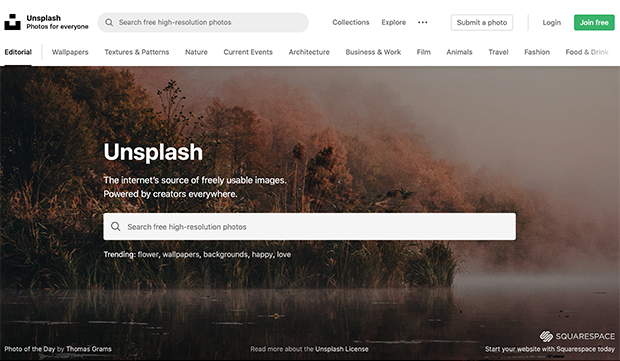
Unsplash is one of the biggest names in permissive copyright stock photography. They’re focused on sharing your photo with interested users rather than selling them. The Unsplash license is similar to a Creative Commons license, except that it prohibits using the photos to create a similar service. That means Unsplash doesn’t pay photographers for listing their images on the site, nor does Unsplash require users to credit photographers when they use an image.
While this may seem like a worse deal than microstock services like Shutterstock and iStock, Unsplash can provide drastically more exposure to you and your work. Whether this is worth the sacrifice of not earning any income from your photos is a personal decision.
7. Pexels
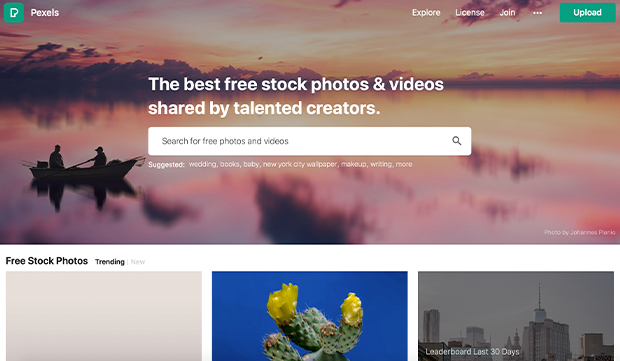
Pexels operates similarly to Unsplash. Their license allows users to download all the photos on their website for free. Like Unsplash, they don’t require attribution, and they allow users to modify the photos they download as they see fit.
While Pexels won’t earn you any income for your images, it’s worth posting your images here. This is especially true if you can also post them on a less restrictive stock photography site. Earn some passive income on a stock photo site like iStock while gaining exposure through Pexels!
Conclusion
That covers the major stock photography website options. While there are dozens of additional sites out there, these options are some of the best for beginners. Their large market share, easy to understand guidelines and large catalogs make them great initial choices.
If you enjoyed this guide to the best stock photo sites, check out some of our other helpful guides! Read up on:
- 8 Best Free Photo Editing Software
- 14 Best Free Image Optimization Tools for Image Compression
- 121 Best Free Lightroom Presets That You Will Fall in Love With
Don’t forget to follow us on Facebook and Twitter for more photography resources, photo editing tips and WordPress tutorials.

